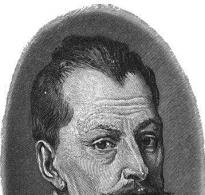General data on the length of roads in the Russian Federation. List of countries by length of road network Highway NH010, China
According to Rosavtodor, the length of federal roads at the beginning of 2008 was 48.8 thousand km, which is less than 5 percent of the total length of the country's road network, while federal roads account for more than 40 percent of all passenger and freight traffic. Including, the length of the main roads amounted to 30 thousand km. At the beginning of 2009, the length of motor roads was 939,700 km, of which 754,483 km were for public use. Of these, 629,373 km were paved, including federal - 49,694 km, regional and municipal - 455,610 km, local - 124,068 km.
At the beginning of 2010, the length of public federal highways was 50,127 km, including 49,931 km of paved roads. With improved coverage - 44,927 km. The length of regional highways was 493,342 km, including 449,859 km with hard surface, 309,433 km with improved surface. The total length of roads in the Russian Federation as of January 2010 is 983.1 thousand km. At the beginning of 2011, the total length of motor roads in Russia increased by 2.1% and reached 1,004 thousand km.
Table 1
Length of roads in the Russian Federation, total and by type, thousand km
Source. Rosstat data.
2) Since 2006 - including local roads.
3) Without small businesses.
4) Until 2006 - roads of the constituent entities of the Russian Federation.
Until 2003, inclusive, the length of motor roads in the Russian Federation practically did not change. Further, there was a downward trend: for 2003-2005. this indicator decreased by 4.5%. However, already in 2006 there was an 8% increase. In 2007, the growth in the length of roads continued, but in 2008, due to well-known reasons, there was a decline. In 2009, the quantitative increase turned out to be positive, although there were fewer roads built during this period than in 2008. A positive increase could have occurred due to the commissioning of completed roads started in previous years. In 2010, the total length of roads increased by 21,000 km.

Rice. 1. The total length of motor roads in the Russian Federation, divided into public and non-public roads according to the new classification, 2003-2011 (at the beginning of the year, thousand km)
The ratio of public and non-public roads in Russia cannot be called stable, as there is a steady upward trend in the share of public roads. Thus, if in 2002 this ratio was 1.9 times, then in 2010 it was 4.6.

Rice. 2. Length of public and non-public roads in the new classification, 2003-2011 (for the beginning of the year, %)
The ratio of paved public to non-public roads has also been increasing in recent years. In 2002, this indicator was equal to 2.5, in 2010 - 5.5.

Rice. 3. Length of public and non-public paved roads in the new classification, 2003-2011 (at the beginning of the year, thousand km)
Source. ABARUS Market Research according to Rosstat
However, the above figures show that although public roads are increasing in number, they are growing more at the expense of non-paved roads. If in 2002 the share of paved roads was 91.2%, then in 2010 it was almost 11% less (in the total volume of public roads).

Rice. 4. Share of roads with hard and non-hard surface in the total volume of public roads, 2003-2011 (for the beginning of the year, %)
Source. ABARUS Market Research according to Rosstat.
The length of federal roads practically did not change during 2002-2007. A significant increase in length in 2008-2010. connected with the inclusion in the federal network of highways "Vilyui", from St. Petersburg through Priozersk, Sortavala to Petrozavodsk, a number of other sections of roads of regional significance.

Rice. 5. Length of roads of local, regional, federal significance with hard surface in the new classification, 2003-2011 (at the beginning of the year, thousand km)
Source. ABARUS Market Research according to Rosstat.
The annual reduction in the length of roads of regional importance occurs in connection with the process of redistribution of roads of the constituent entities of the Russian Federation and municipalities, carried out in accordance with the principles of classification of roads, as well as due to the transfer of a number of regional roads to the federal network.

Rice. 6. The share of hard and soft pavements for federal and regional public roads at the beginning of 2011, %
Source. ABARUS Market Research according to Rosavtodor.
Improved pavement roads include roads with the following types of pavement: cement concrete, asphalt concrete, crushed stone and gravel treated with binders. Regional roads are provided with such roads to a lesser extent compared to federal ones.
Public roads are of low quality: 8.1% of roads are unpaved, almost a third of the roads have gravel, crushed stone and bridge coverage. Currently, 28.6% of rural settlements in the Russian Federation do not have hard-surfaced roads to connect with the public communications network.
According to the Ministry of Economic Development, due to the decline in industrial production and depression in the construction sector, the volume of cargo transportation by road decreased in 2009 by 24%, and in 2010 by 0.1%. The decline also took place in the segments of rail transport (17%) and inland transport (35.7%). In contrast, shipping by sea increased by 6.1%. From 2002 to 2008, about 7 billion tons of goods were transported annually by road transport. By 2010, cargo transportation has decreased to 5 billion tons of cargo.

Rice. 7. Transportation of goods by road, 1992-2011 (million tons)
Source. ABARUS Market Research according to Rosstat.
Freight turnover by road repeats the dynamics of traffic volume: a high figure in 1992, a decline by 2000, a progressive, but more intensive growth by 2008. In 2009, a decline to the level of 2004 is observed. .8 billion ton-kilometers (106.9% against the level of 2009), including 199.4 (110.7%) automobiles1. In 2011, this figure increased to 229 billion ton-kilometres2.

Rice. 8. Freight turnover by road, 1992-2011 (billion ton-kilometers)
Source. ABARUS Market Research according to Rosstat.
In January-April 2012, the cargo turnover of transport, according to preliminary data, amounted to 1668.5 billion ton-kilometers, including railway - 736.6 billion, road - 70.8 billion, sea - 18.7 billion. , internal water - 2.7 billion, air - 1.6 billion, pipeline - 838.1 billion ton-kilometers.
In commercial cargo turnover (tons per kilometer), except for pipelines, rail transport is in the lead. But in the total volume of cargo transportation, road transport is ahead of it. At the same time, the freight turnover of vehicles, although slowly, is also growing.
Passenger transportation by road has a negative trend: if in 1995 the volume of passenger transportation by bus was 22.8 billion people, then in 2009 it was only 11.3 billion people. (twice smaller). The volume of transportation by taxi transport has decreased by almost 10 times. This is due to the active reorientation of the population from passengers of commercial vehicles to individual car owners.
The car park of the Russian Federation increased by the beginning of 2012 to 35 million cars, the forecast for 2015 is 48-49 million. The number of cars per thousand inhabitants has been actively growing in recent years. Many families have several cars, all this creates a load on the roads.
The provision of roads per thousand inhabitants in the Russian Federation is also increasing, but much more slowly than the provision of cars. Here official data on the length of public roads are given, the low volume before 2005 is due to the peculiarities of statistical accounting of roads, and not to their sharp increase after 2006.
It should be noted that the share of the federal network operating in overload mode increased from 12,349 to 13,379 km (8%) instead of the planned 14,898 km.
The state of the road economy in Russia
The situation in the Russian road sector has only worsened in recent years, despite positive quantitative increases in the length of roads, which are reported annually by official statistics, as well as a constant increase in funding.
Indeed, over the past ten years (from 2001 to 2011), the total length of roads in Russia has increased by less than 125,000 km (i.e., by 13-14%). But if in 2009 about 40% of federal highways met the regulatory requirements for transport and operational indicators, then by the end of 2011, the share of such roads, according to Avtodor's expectations, should have been only 33%. Judging by the fact that, as of June 2012, officials are in no hurry to report on achievements, the goal was not achieved. It should be noted that the length of the federal roads themselves has changed little over the specified period, having increased from only 47 to 50 thousand km, and has remained unchanged for the past four years.
But the share of public roads is actively increasing - the growth was 42% for the period from 2006 to 2011 - from 581 thousand km to 825 thousand km. But it would be more correct to call this growth fictitious, since the mileage is mainly growing not due to new construction (no more than 2.5-3 thousand km of roads are built in the country annually), but due to the transfer of existing roads from one official category to another. In this case, new public roads are regularly “cut out” from non-public roads, the “non-communality” of which in most cases is difficult to fit into clear criteria.
At the same time, the content of the FTP "Development of the transport system of Russia for 2010-2015." promises that by 2015 the share of the length of public roads of federal significance that meet the regulatory requirements for transport and operational indicators will be 27.18 thousand km, that is, it will approach 50% compared to the current 33%. It is not clear how the authors of the program are going to achieve this, because in the last 5 years the quantitative increase in the roadbed in Russia has been replenished by poor quality roads (in the language of road builders - without a hard surface). If in 2002 the share of unpaved roads was 8.8%, then at the beginning of 2011 it was already 19.4% (in the total volume of public roads), that is, it has more than doubled and is now almost 1/5 length of all Russian roads.
It is worth recalling that the truck fleet has grown by more than 10% in five years, and the passenger car fleet has grown by more than 30%. And the potential of the Russian automotive market will allow it to grow at a no less active pace in the coming years. And this means that the load on the roads will continue to grow.
In order to improve the quality of the most actively exploited roads to an acceptable level, Russia needs to build and reconstruct at least 2.5 thousand km of federal roads annually, and not 0.8-1.2 thousand km per year, as it is now. But it is not easy to find the necessary funds for the implementation of this plan, especially in conditions when the importance of this or that construction in Russia is determined not so much by economic as by political reasons.
In 2011, the planned costs for road construction, provided for by the 2010-2015 Program, were adjusted, as a result of which the financing of road construction projects in the European part of the country, such as M-5 "Ural", M-6 "Caspian", M-7 " Volga", M-9 "Baltic" and some others, was quite strongly reduced (2-3 times). Funding for strategic construction projects in the south - M-27 "Dzhugba", M-29 "Caucasus", in the north and west - M-8 "Kholmogory", M-10 "Scandinavia", M-11 "Narva", as well as remote Baikal routes and M-56 "Lena-Kolyma".
In 2011, most of the objects of the Federal Target Program were long-term construction - during the year, sections that were not completed in 2010 continued to be financed. In some cases, less funds were allocated for them than in the previous year, but in most cases, the amounts increased.
The activity of the largest road construction companies in Russia also shows that they need more time to complete the objects under construction and construction. Almost 70% of all facilities that were supposed to be commissioned in 2011, according to the plan, continue to be in operation in 2012. This also applies to market leaders such as OJSC Mostotrest, OJSC Transstroy and other companies.
The general conclusion is that infrastructure facilities in Russia are built slowly, with a large number of amendments and changes made in the course of work, which, as a rule, changes the estimate upwards as a result. The annual expenditure on current and major repairs of Russian roads in terms of one kilometer ranges from 27 thousand to 55 thousand dollars.
But with the growth of financial injections, quality assurance does not grow. Problems do not bypass even those objects to which the attention of the state is riveted. Thus, in 2011, a new 5.4 km highway leading to the Skolkovo Innovation Center, built for 6 billion rubles using modern technologies, was covered with cracks just a year later and was in need of repair. In June 2012, a few months before the start of the APEC Summit in Primorye, the Sedanka-Patrokl highway (the road that will connect Vladivostok Airport with the bridge to Russky Island) was washed out due to a drainage system not built by the contractor.
1 Statistical review of the Russian Federation for 2010
2 Statistical review of the Russian Federation for 2011
- - highways of general and non-public use, located on the territory of Russia. Contents 1 Classification 2 Accounting and numbering of roads ... Wikipedia
This term has other meanings, see Road (meanings) ... Wikipedia
"freeway" redirects here; for the festival, see freeway (festival). The E4 motorway in Sweden A motorway is a high-speed motorway that does not have a single-level intersection with other roads. Predna ... Wikipedia
This word has Buenos Aires (meanings) City, capital of Argentina Buenos Aires Ciudad Autónoma de Buenos Aires ... Wikipedia
France- (France) The French Republic, the physical geographical characteristics of France, the history of the French Republic Symbols of France, the political structure of France, the armed forces and police of France, the activities of France in NATO, ... ... Encyclopedia of the investor
This term has other meanings, see Zeeland. New Zealand New Zealand Aotearoa ... Wikipedia
State of Israel, in the West. Asia, east coast of the Mediterranean. Formed in 1948 on the basis of a decision of the UN General Assembly of November 29, 1947. The name of the Jewish state, which existed approximately in these ... ... Geographic Encyclopedia
Conquering kilometers of roads is an exciting experience. Especially if the track has a modern surface and allows you to drive along the longest route without interference.
Today we offer the Top 10, which included longest highways in the world. Each of them is of particular importance for those countries through whose territory it runs.
10. Highway NH010, China
In terms of the total length of the road network, China ranks second in the world after the United States. The length of the main National Highway 010 is 5,700 km. The route starts in the north-east of the continental part of the country, and ends on the island of Hainan, where the cars are transported by ferry.
9. Track in the Tarim Desert, China
This highway is the longest road in the desert. The road is important for oil producers, who a few years ago began to develop a large oil and gas field in the desert.
8. Interstate 90, USA
The American road network is the longest and most extensive on the planet. Interstate 90 starts at the Canadian border and ends in Boston. It is noteworthy that the highway passes through the world's longest pontoon bridge. Most of the highway is tolled.
7. US Route 20, USA
The longest track in the US has a length of 5,500 km. The road connects the East Coast of the United States with the West. US Route 20 passes through the territory of the main national park Yellowstone.
6. Karakoram Highway, Pakistan-China
The route almost completely repeats the route of the ancient Great Silk Road. Highway is the highest in the world. Due to the dangers lurking in the sheer cliffs, nearly 1,000 workers died while building the road.
5. Trans-Siberian Highway, Russia
On official maps, such a highway simply does not exist. However, if we combine several routes from the Baltic to the Sea of Japan into a single whole, we get a single federal road with a length of 11,000 km.
4. Trans-Canada Highway, Canada
This highway connects 10 Canadian provinces. The length of the route is 8030 km. Having traveled the entire route, you can get from the Pacific coast directly to the Atlantic coast. The road has been under construction for over 20 years.
3. Highway 1, Australia
Australia's main state highway stretches for a record 14,500 km. The route does not go deep into the continent, but all the time stretches along the coast. More than a million vehicles pass through Highway 1 daily.
2. Highway AH1, Japan - Turkey
Asian Highway No. 1 is a special UN project that has received billions of dollars. The length of the route connecting Japan, both Koreas, Vietnam, Cambodia, Burma, India, Bangladesh, Thailand, Iran, Pakistan and Turkey is 20,557 km. Today, cars are transported from the Japanese part of the highway to the mainland by ferry, but a project for an underwater tunnel is being developed.
1. Pan American Highway, North and South America
 The longest highway in the world is listed in the Guinness Book of Records. The length of the road is 48,000 km, it passes through the territory of 15 states. Construction of the Pan-American Highway began in 1889. It is noteworthy that on the official maps of the United States and Canada there is no route called the "Pan American Highway", although in fact the road passes through the territory of these countries.
The longest highway in the world is listed in the Guinness Book of Records. The length of the road is 48,000 km, it passes through the territory of 15 states. Construction of the Pan-American Highway began in 1889. It is noteworthy that on the official maps of the United States and Canada there is no route called the "Pan American Highway", although in fact the road passes through the territory of these countries.





